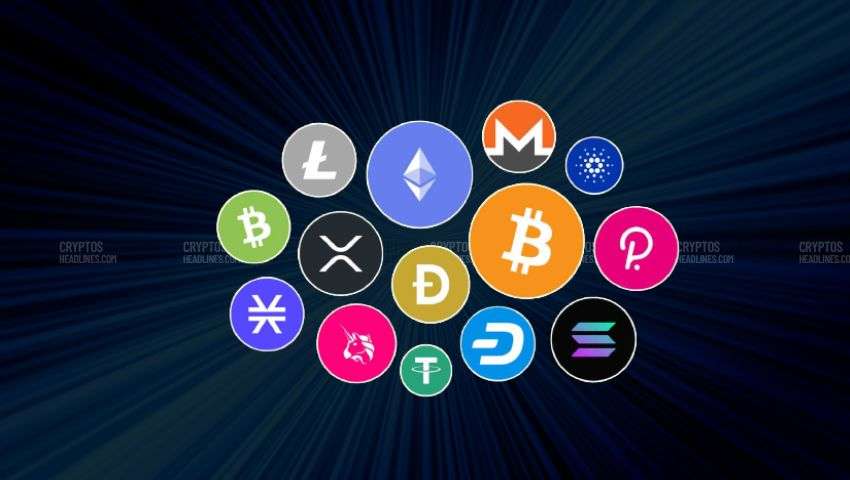“Here are the top 10 Layer 1 blockchain ecosystems ranked by Total Value Locked (USD) and number of cryptocurrencies:”
| Rank | Layer 1 Ecosystem | Total Value Locked (USD) | No. of Cryptocurrencies |
|---|---|---|---|
| 1 | Ethereum | 32.1B | 3578 |
| 2 | BNB Chain | 5.1B | 2992 |
| 3 | Avalanche | 865.5M | 343 |
| 4 | Fantom | 470.7M | 268 |
| 5 | Cronos | 377.5M | 82 |
| 6 | Solana | 293.1M | 149 |
| 7 | Cardano | 170.7M | 29 |
| 8 | Algorand | 143.6M | 26 |
| 9 | Celo | 135.3M | 12 |
| 10 | Canto | 134.0M | 17 |
Table Source Coingecko
The following table ranks the top 10 Layer 1 blockchain ecosystems by Total Value Locked (USD) and number of cryptocurrencies they support:
Ethereum: is a decentralized blockchain platform introduced in 2015, known for supporting smart contracts and enabling the development of decentralized applications and services. Its native cryptocurrency is Ether (ETH), used for transaction payments and smart contract fees. Ethereum is widely used for creating DeFi applications, NFTs, and other blockchain-based services.
BNB Chain: is a decentralized blockchain platform introduced in 2019 by Binance, one of the world’s largest cryptocurrency exchanges. It is a Layer 1 blockchain designed for creating and deploying decentralized applications, as well as supporting digital assets and payments. BNB Chain’s native cryptocurrency is Binance Coin (BNB), which is used for transaction fees, trading, and accessing various features on the Binance exchange. BNB Chain has gained popularity due to its high throughput, low fees, and integration with the Binance exchange ecosystem.
Avalanche: is a Layer 1 blockchain platform that aims to provide high scalability, fast transaction finality, and low fees. It was introduced in 2020 and is designed to support the deployment of decentralized applications, digital assets, and smart contracts. Avalanche uses a consensus protocol called Avalanche consensus, which allows for the creation of multiple subnets within the main network. Avalanche’s native cryptocurrency is AVAX, which is used for transaction fees and governance within the network. Avalanche has gained attention due to its high throughput, low latency, and ability to support interoperability between different blockchain networks.
Fantom: is a decentralized, open-source blockchain platform introduced in 2018. It is a Layer 1 blockchain designed to provide fast transaction finality, low fees, and high scalability for the deployment of decentralized applications and digital assets. Fantom uses a consensus protocol called Lachesis, which enables asynchronous confirmation of transactions and parallel processing of smart contracts. Fantom’s native cryptocurrency is FTM, which is used for transaction fees, staking, and governance within the network. Fantom has gained attention for its high throughput, low latency, and compatibility with the Ethereum Virtual Machine (EVM), allowing for easy migration of Ethereum-based dApps to the Fantom network.
Cronos is a Layer 1 blockchain introduced in 2021 by Crypto.com, a leading cryptocurrency exchange and platform. It is a modified version of the Ethereum blockchain, designed to provide high scalability and interoperability with other blockchain networks. Cronos uses a consensus protocol called Proof of Authority (PoA), which allows for faster block confirmation times and lower fees compared to Ethereum. Cronos’ native cryptocurrency is CRO, which is used for transaction fees and governance within the network. Cronos has gained attention due to its compatibility with the Ethereum Virtual Machine (EVM), allowing for easy migration of Ethereum-based dApps to the Cronos network, and its integration with the Crypto.com exchange ecosystem.
Solana is a Layer 1 blockchain platform introduced in 2020, designed to provide high scalability and fast transaction finality. It uses a unique consensus protocol called Proof of History (PoH) combined with Proof of Stake (PoS) to achieve high throughput and low fees for the deployment of decentralized applications and digital assets. Solana’s native cryptocurrency is SOL, which is used for transaction fees, staking, and governance within the network. Solana has gained attention due to its high transaction processing capacity, with the ability to handle up to 65,000 transactions per second, and its compatibility with the Ethereum Virtual Machine (EVM), enabling easy migration of Ethereum-based dApps to the Solana network.
Cardano is a Layer 1 blockchain platform introduced in 2017, designed to provide scalability, security, and sustainability. It is the first blockchain platform to use a proof-of-stake (PoS) consensus protocol called Ouroboros, which is designed to be energy-efficient and secure. Cardano’s native cryptocurrency is ADA, which is used for transaction fees, staking, and governance within the network. Cardano is known for its focus on academic research and peer review, with a team of researchers and developers constantly working on improving the platform’s features and functionality. It is designed to support the deployment of decentralized applications and digital assets, with a focus on interoperability and sustainability.
Algorand is a Layer 1 blockchain platform introduced in 2019, designed to provide high scalability, security, and decentralization. It uses a consensus protocol called Pure Proof of Stake (PPoS), which is designed to achieve fast transaction finality and prevent forks in the network. Algorand’s native cryptocurrency is ALGO, which is used for transaction fees, staking, and governance within the network. Algorand is known for its focus on interoperability, with the ability to support the deployment of decentralized applications and digital assets across different blockchain networks. It is designed to support high-volume, low-latency transactions, making it suitable for applications that require high throughput and fast confirmation times. Algorand also offers a suite of developer tools and APIs to make it easier for developers to build on the platform.
Celo is a Layer 1 blockchain platform introduced in 2019, designed to provide high scalability and low fees for the deployment of decentralized applications and digital assets. It uses a consensus protocol called Proof of Stake (PoS) with a novel identity-based approach, which allows for fast transaction finality and lower energy consumption compared to other PoS protocols. Celo’s native cryptocurrency is CELO, which is used for transaction fees, staking, and governance within the network. Celo is designed to support mobile-first applications, with a focus on financial inclusion and accessibility. It offers a suite of developer tools and APIs to make it easier for developers to build decentralized applications on the platform, with a focus on usability and ease of integration. Celo has gained attention for its focus on social impact, with a mission to create a more inclusive and equitable financial system.










